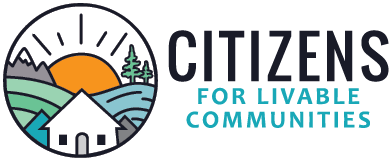On paper, the homeless community isn’t much different than any other.
It’s a blend of individuals and families, including some with children. More than might be expected are suffering from mental illness or substance abuse disorders, some both.
Their crises are exacerbated by living in shelters and on the streets.
The annual homeless count in Marion and Polk counties provides a snapshot of who, where and why.
Advocates working on the front lines consider the data gathered from 1,218 homeless people during the 2018 “Point in Time” count reflective of the big picture and a successful first step toward reducing local homelessness.
“No magic bullet connects the PIT count with improved funding,” said Jimmy Jones, program director of the nonprofit Mid-Willamette Valley Community Action Agency. “However, over the course of time, it will make it a lot easier for us to seek additional funding, and it will make it easier for us to plan smartly and wisely.”
More: Salem police on front line of growing homeless crisis, urge changes
His agency was front and center coordinating and executing the Jan. 31 PIT count, the results of which have been submitted to the U.S. Department of Housing and Urban Development.
HUD mandates communities do the PIT count to be eligible for money for programs that address homelessness.
Here’s a demographic glance at those surveyed in Marion and Polk counties:
- 1,027 were white (84 percent)
- 483 were female (40 percent)
- 164 were children under 18 (13 percent)
- 292 had a serious mental illness (24 percent)
- 316 had a substance abuse disorder (26 percent)
- 619 were unsheltered (51 percent)
- 452 were chronically homeless (37 percent)
The percentage of chronically homeless individuals stood out for Kellie Battaglia, client services manager for Salem Housing Authority.
“While we knew it from the Coordinated Entry assessment data, it is still a startling high number to see in the PIT data,” she said.
Salem Housing Authority uses PIT count data to help develop and evaluate homeless programs and services and make decisions about future affordable housing projects.
The design of the Homeless Rental Assistance Program (HRAP), which is administered by Salem Housing Authority and funded primarily by the city, was selected because it was deemed best suited to address the needs of the chronically homeless population.
HUD defines a chronically homeless individual as someone with a disabling condition who has been continuously homeless for a year or more or has had at least four episodes of homelessness in the past three years.
“They’re the most vulnerable and cost the community most of its resources,” said Jones, whose agency helps vet HRAP clients. “They’re the ones going to the hospital. They’re the ones going to jail. They’re ones ODOT has to clean up after.”
To date, HRAP has housed 65 chronically homeless individuals in Salem with a 95 percent retention rate, 10 percentage points better than the national rate, according to Jones.
“The model is working,” he said. “We just need to stay the course.”
Rapid re-housing continues to be an important local tool in serving the homeless. It provides short-term rental assistance and services, helping people increase self-sufficiency and stay housed.
Research shows rapid re-housing puts people in a better position to address other challenges that may have led to their homelessness, such as obtaining employment or addressing substance abuse issues.
Since last July, Jones said, the Community Action Agency program ARCHES has helped house 300 households with more than 650 individuals.
Local programs are making an impact on the homeless crisis, but the hope is that a more accurate PIT count like the one in 2018 will open the door for more funding.
Jones’ team begins planning this month for the next count in January 2019.
One focus will be on the unsheltered rate, the percent of homeless sleeping in cars or camping outside as opposed to a shelter. It was 6 percent lower in Marion and Polk counties than for all of Oregon, which Jones said has the third-highest unsheltered rate in the country at 57 percent.
Better survey efforts in rural areas such as Falls City, northern Polk County, the canyon between Stayton and Detroit, and the triangle between Silverton, Mt. Angel and Woodburn could have made up the difference.
“Most people describe the homeless problem as fundamentally unsolvable, and it’s never going to all go away,” Jones said. “But we can dramatically reduce it through smart and targeted resources.”
clynn@StatesmanJournal.com, 503-399-6710, or follow on Twitter @CapiLynn and Facebook @CapiLynnSJ.


Leave A Comment
You must be logged in to post a comment.